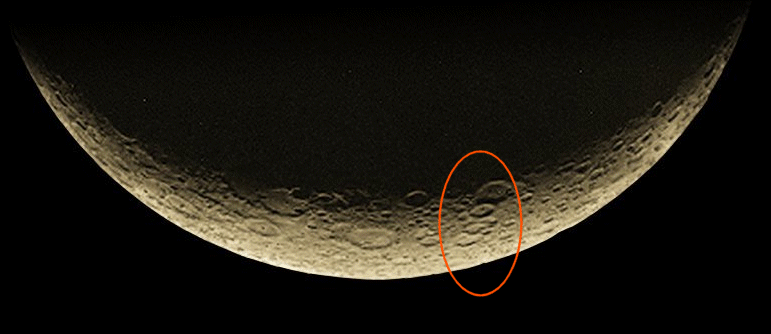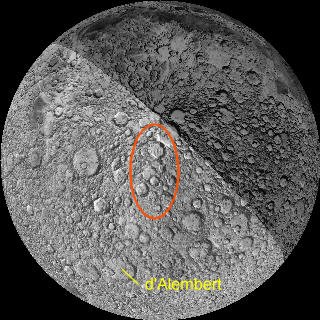
The same feature can be seen in this photo atlas image where the image centre is at 80 degrees north and 180 west. The phase of the Moon is about 3 days from ”new”. Crater d’Alembert is a recognizable feature.
Atlas image from: http://www.fourmilab.ch/earthview/vplanet.html

The European SMART-1 probe made its third lunar resonance gravity assist on Oct 12 and on Oct 26 was in a 173339 x 298835 km x 20.6 deg deep Earth orbit. The continued gravitational effect of the Moon raised the orbit until lunar capture on Nov 15. On Nov 11 the spacecraft finally passed through the weak stability boundary region at the Earth-Moon L1 point, where small changes to the probe's path result in large alterations to its final orbit, and where the orbit becomes better described as Moon-centered rather than Earth-centered. The probe reached perilune on Nov 15 at 1748 UTC and entered a 4962 x 51477 km orbit around the Moon inclined at 81 degrees to the lunar equator.
This is the most loosely bound lunar orbit ever achieved, with its highest point close to the Earth-Moon gravitational boundary - the US record-holder Explorer 35 in 1967 had an apolune of only 7800 km, while the 1990s Japanese probes Hagoromo and Hiten had apolunes of 22000 and 49400 km respectively; the Apollo missions went directly to low orbits with apolunes of only 300 km.